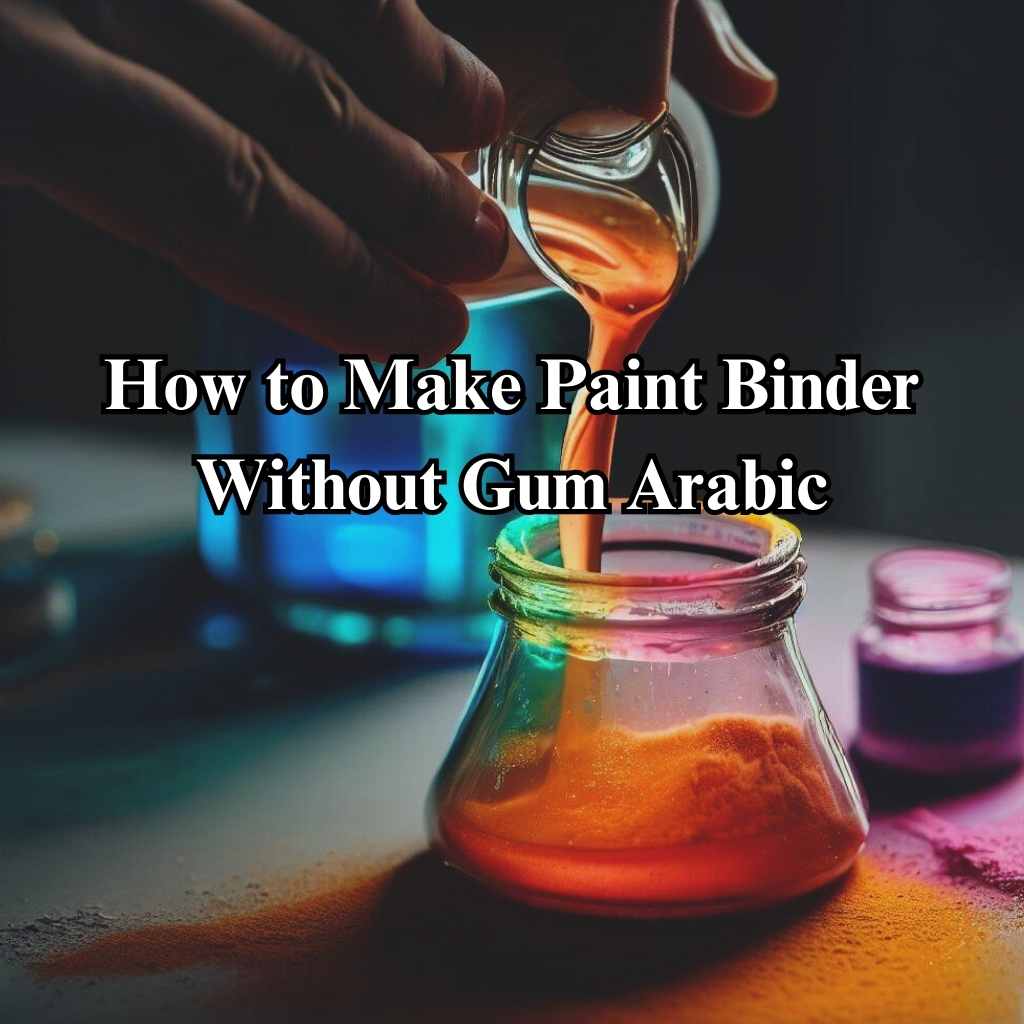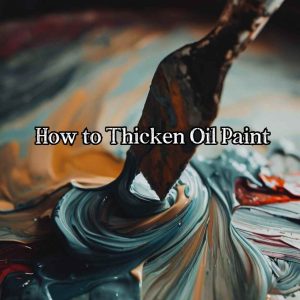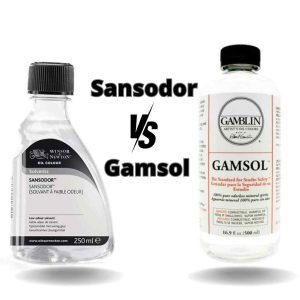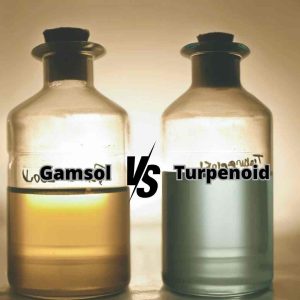Are you an artist seeking innovative ways to enhance your paintings? Are you tired of relying on conventional materials like gum arabic as a paint binder?
Look no further! In this captivating introduction, we delve into the world of alternative paint binders, exploring how you can create stunning artwork without relying on gum arabic.
As an artist, you understand the vital role a paint binder plays in achieving the desired consistency, adhesion, and longevity of your paintings. However, traditional binders like gum arabic may not always be accessible or suitable for every artistic endeavor. But fear not! We’re here to introduce you to a world of possibilities.
Get ready to unlock the secrets of how to make a paint binder without gum arabic, as we explore a range of captivating alternatives that will elevate your artwork to new heights.
Say goodbye to limitations and embrace the freedom of artistic expression with these innovative solutions. Let’s dive in!
What is Gum Arabic
Gum arabic, also known as acacia gum, is a natural resin derived from the sap of Acacia trees. It has been used for centuries as a binder in various artistic applications, including painting.
As a paint binder, gum arabic plays a vital role in suspending pigments in water-based paints, improving their flow, and enhancing their adhesive properties. Its ability to dissolve easily in water makes it an ideal choice for creating watercolor paints and other aqueous mediums.
How to Make Paint Binder Without Gum Arabic: Exploring Alternatives

While gum arabic is widely available and highly regarded, there are alternatives that can effectively substitute for it in paint formulations. Let’s delve into some of these alternatives:
1. Gelatin-Based Paint Binder Recipe
Gelatin, derived from collagen obtained from animal bones and tissues, can serve as an excellent alternative to gum arabic. When used as a binder, gelatin provides a smooth and glossy finish to the paint.

Ingredients needed:
- Unflavored gelatin powder
- Warm water
- Pigments of your choice
Step-by-step instructions for making the binder:
- Dissolve the desired amount of gelatin powder in warm water, following the instructions on the packaging.
- Allow the gelatin mixture to cool and form a gel-like consistency.
- Gradually add pigments to the gelatin mixture, stirring well to achieve a smooth and homogeneous paint mixture.
- Adjust the consistency by adding more water or gelatin as needed.
2. Homemade CMC Binder Recipe
CMC, or Carboxymethyl Cellulose, is a cellulose derivative widely used in various industries, including the production of paint. As a binder, CMC offers excellent water-solubility, stability, and film-forming properties.
Necessary ingredients:
- CMC powder
- Distilled water
- Pigments
Step-by-step guide to creating the CMC binder:
- Dissolve the desired amount of CMC powder in distilled water, stirring until the mixture forms a smooth and gel-like consistency.
- Let the CMC solution sit for a few hours or overnight to allow the CMC to fully dissolve.
- Gradually add pigments to the CMC solution, stirring well to ensure even dispersion and bonding.
- Adjust the consistency by adding more water or CMC solution as needed.
Tips for achieving optimal results with CMC binder:
- Follow the instructions on the CMC packaging for the appropriate water-to-powder ratio.
- Allow the CMC solution to hydrate fully before adding pigments for better binding.
3. PVA-Based Paint Binder Recipe

PVA, or Polyvinyl Acetate, is a synthetic polymer widely used in the production of adhesives and paints. It can also serve as a viable substitute for gum arabic as a binder in paint formulations.
PVA has excellent adhesive properties and dries to a flexible and transparent film. It is commonly used in acrylic paints and offers good adhesion to a variety of surfaces.
However, PVA may not be suitable for all paint mediums and should be used selectively based on the specific requirements of your artwork.
Required ingredients:
- PVA (Polyvinyl Acetate) glue
- Water
- Pigments
The step-by-step process for making the PVA binder:
- Mix the desired amount of PVA glue with water, following a recommended ratio of glue to water for the desired consistency.
- Stir the mixture thoroughly until the glue and water are well blended.
- Gradually add pigments to the PVA solution, stirring continuously to achieve uniform color distribution.
- Adjust the consistency by adding more water or PVA glue as needed.
4. Acrylic Mediums as Binders
Acrylic mediums are versatile products that serve as both binders and additives in paint formulation. They offer a range of benefits and allow artists to achieve various effects in their artwork.
There are several types of acrylic mediums like gloss, matte, gel, and flow. Each has its unique properties and functions. Artists can experiment with different combinations and ratios to achieve desired effects in their paintings.
Required ingredients:
- Desired Acrylic Medium
- Pigments
Instructions on making Acrylic Mediums binder:
- Pour the measured amount of acrylic medium into the mixing container.
- Use a palette knife or a stir stick to mix the acrylic medium until it is well-blended and free of any lumps or clumps.
- Add acrylic paints or pigments to the medium to create your desired colors.
- Mix the pigments thoroughly into the medium until the desired consistency is achieved.
Experimental Binders and Unique Substitutes:
1. Vegetable Starch Paint Binder Recipe
Vegetable starch, derived from corn, potato, or tapioca sources, presents a natural and environmentally friendly alternative to gum arabic. When cooked and dissolved in water, vegetable starch can act as a binder for paint.
It provides a smooth texture and enhances the cohesion of pigments. Vegetable starch is commonly used in homemade, DIY paint recipes due to its accessibility and affordability.
While it may not offer the same level of stability and adhesion as other binders, it can still produce satisfactory results, especially in more experimental or temporary artworks.
Ingredients and materials for the vegetable starch binder:
- Vegetable starch (cornstarch, potato starch, or tapioca starch)
- Water
- Pigments
Instructions on making the vegetable starch binder:

- Mix the desired amount of vegetable starch with water in a saucepan, following the recommended ratio on the starch packaging or your preferred consistency.
- Heat the mixture on low heat, stirring continuously until the starch is fully dissolved and the mixture thickens.
- Allow the mixture to cool and reach a gel-like consistency.
- Gradually add pigments to the vegetable starch mixture, stirring well to ensure even dispersion.
- Adjust the consistency by adding more water or vegetable starch as necessary.
Suggestions for the successful application of vegetable starch binder:
- Experiment with different vegetable starches to discover variations in texture and binding properties.
- Heat the mixture slowly and stir continuously to prevent clumping and achieve a smooth binder.
2. Casein-Based Paint Binder Recipe
Casein, a protein found in milk, is a traditional and time-tested alternative to gum arabic as a paint binder. Casein offers excellent adhesive properties, making it suitable for a wide range of paint applications, including tempera and acrylic paints.
It provides good durability and water resistance, and its compatibility with various pigments makes it a versatile choice for artists.
List of ingredients and materials needed:
- Casein powder
- Water
- Ammonia (optional, for preservative purposes)
- Pigments
Detailed instructions for making the casein binder:
- Dissolve the desired amount of casein powder in water, following the recommended ratio on the packaging or your preferred consistency.
- Add a few drops of ammonia to the casein solution if desired, as it can act as a preservative.
- Stir the mixture well until the casein powder is fully dissolved and the solution becomes smooth and consistent.
- Gradually add pigments to the casein solution, stirring continuously to ensure proper mixing and dispersion.
- Adjust the consistency by adding more water or casein solution as required.
3. Egg Yolk Binder:
Egg yolk has a long history of use as a binder in art, particularly in tempera and oil painting. Its natural emulsifying properties make it an ideal choice for creating stable paint mixtures. Egg yolk binders offer unique textures, rich colors, and a traditional approach to painting.
List of ingredients and materials needed:
- Egg yolks
- Water
- Pigments
Instructions on making the egg yolk binder:
- To make egg yolk binder, separate the yolk from the eggs and take them in a mixing container.
- Add water to the yolks and gently mix until the mixture becomes creamy.
- You can then mix in your pigments to create your desired colors.
Tips for Customizing Paint Binders
When it comes to creating your own paint binders, there are several ways you can customize them to achieve your desired effects. Here are some tips to help you enhance your paint binders and make them truly unique:
Adding additives for desired effects
- Experiment with various additives to achieve different effects in your paint. For example, adding texture mediums can create a rough or grainy surface, while flow mediums can improve the flow and leveling properties of the paint.
- Explore the use of transparency mediums to create translucent layers or glazes that allow underlying colors to show through.
- Consider using thickeners or extenders to modify the viscosity of your binder, making it more suitable for specific techniques or applications.
Experimenting with different ratios to adjust binder consistency
- Adjusting the ratio of binder to pigment can significantly impact the consistency and handling properties of your paint. Experiment with different ratios to find the perfect balance for your needs.
- Increase the amount of binder for a smoother and more fluid consistency, which works well for techniques such as pouring or glazing.
- Decrease the binder ratio for a thicker, more impasto-like consistency, ideal for creating textured brush strokes or palette knife work.
Incorporating pigments or dyes for color variation
- Enhance the color palette of your paint binder by incorporating pigments or dyes. This allows you to create a wide range of hues and tones beyond what is commercially available.
- Experiment with different pigments to achieve unique and custom colors. Mix primary pigments to create secondary and tertiary colors, or explore the use of metallic or interference pigments for special effects.
- Keep in mind that the quality and lightfastness of the pigments you choose will affect the longevity and stability of your paint. Use high-quality pigments that are suitable for your desired application.
Testing and Evaluating Paint Binders:
To ensure the best outcome for your artwork, it’s crucial to test and evaluate different paint binders before fully committing to a specific one.
Here are some essential steps to effectively test and evaluate paint binders:
Conducting swatch tests to determine binder effectiveness
- Create a series of swatches using different paint binders you want to evaluate. Label each swatch with the corresponding binder used.
- Apply the swatches onto a surface that is representative of your intended art medium, such as canvas, paper, or wood.
- Observe how each paint binder performs in terms of coverage, drying time, and consistency. Take note of any noticeable differences or characteristics.
Assessing binder performance in terms of adhesion and durability
- After the swatches have dried, assess the adhesion of each paint binder by gently rubbing or scratching the surface with your finger or a tool. Note any signs of flaking, peeling, or poor adhesion.
- Test the durability of the binders by subjecting the swatches to different conditions, such as light exposure, humidity, or temperature fluctuations. Observe how each binder holds up over time and under varying environmental conditions.
Considering personal preferences and artistic goals when choosing a binder:
- Reflect on your own artistic preferences and goals. Consider factors such as desired texture, finish, working time, and drying speed.
- Evaluate how well each binder aligns with your artistic vision and the techniques you plan to use. Some binders may excel in specific applications, such as glazing, impasto, or mixed media.
- Take into account any personal considerations, such as allergies or sensitivities, when selecting a paint binder.
How to Store Paint Binders
To ensure the best results and longevity of your paint binders, it’s important to follow proper usage and storage practices.
Here are some guidelines to help you store your paint binders effectively:
- Store your homemade paint binders in airtight containers to prevent air exposure, which can cause drying or contamination. Use glass or plastic containers with secure lids.
- Ensure that your containers, mixing tools, and brushes are clean and free from any residue before using them with your paint binders. Contamination can affect the color purity and overall quality of your paint.
- Avoid cross-contamination by using separate containers and tools for different paint binders or colors. This helps maintain the integrity of each binder and prevents unwanted mixing or color contamination.
- Label your containers with the type of binder, date of preparation, and any additional additives used. This will help you keep track of the contents and their shelf life.
- Store your paint binders in a cool, dry place away from direct sunlight, extreme temperatures, and humidity. Avoid storing them near heat sources or in areas prone to moisture, as it can affect the consistency and quality of the binder.
Troubleshooting Common Issues
Encountering issues with your paint binders can be frustrating, but don’t worry! Here are some common problems artists face when using paint binders and effective troubleshooting techniques to overcome them:
- Cracking or flaking: If your paint binder is cracking or flaking after drying, it could be due to an excessively thick layer or inadequate binding. To address this, consider applying thinner layers of paint or adding a medium that improves flexibility and adhesion.
- Poor adhesion: If your paint binder isn’t adhering properly to the surface, it could be due to insufficient binding or improper preparation of the substrate. Ensure that the surface is clean, dry, and properly primed. You can also try adding a primer or using a different binder known for its adhesive properties.
- Inconsistent consistency: If your paint binder has inconsistent consistency, it could be due to an improper binder-to-pigment ratio. Experiment with adjusting the ratio to achieve the desired consistency. Gradually add more binder if the paint is too thick or add more pigment if it’s too runny.
- Undesired texture or flow: If your paint binder doesn’t have the desired texture or flow, it could be due to the specific properties of the binder used. Experiment with alternative binders such as gel mediums or texture gels to achieve the desired effect. Adjust the ratios to find the right balance between texture and flow.
FAQs
- Can I mix these alternative binders with traditional binders like gum arabic?
Yes, you can experiment with mixing alternative binders and traditional binders like gum arabic. This can open up new possibilities and allow you to customize the properties of your paint. However, it’s important to conduct small tests beforehand to ensure compatibility and desired results, as different binders may have varying chemical compositions and interactions.
- Are these alternative binders eco-friendly?
Many of the alternative binders mentioned, such as acacia gum and vegetable starch, are derived from natural sources, making them relatively eco-friendly options. However, it’s important to consider the environmental impact of the entire art-making process, including the sourcing of raw materials and proper disposal of waste. Whenever possible, opt for sustainably sourced materials and practices to minimize your ecological footprint.
- Can I use these alternative binders for other crafts or DIY projects?
Absolutely! These alternative binders can be used in various craft projects and DIY endeavors beyond traditional painting. Whether you’re creating mixed media art, handmade paper, or experimenting with art journaling, these binders offer versatility and creative potential. Explore their application in different artistic pursuits and let your imagination run wild.
- Can I achieve the same effects with alternative binders as I would with gum arabic?
While alternative binders can provide similar effects to gum arabic, they may impart their own unique qualities and characteristics to your artwork. It’s a matter of personal preference and artistic vision. Experimenting with different binders allows you to discover new textures, finishes, and visual elements that can elevate your creations. Embrace the exploration and let the beauty of artistic experimentation guide your choices.
- Can I use these alternative binders in combination with other mediums or additives?
Absolutely! These alternative binders can be used in conjunction with other mediums and additives to enhance your artistic process. Whether you want to experiment with texture gels, extenders, or flow-improving agents, combining them with alternative binders can offer exciting possibilities and expand your creative repertoire. Just remember to conduct small-scale tests to ensure compatibility and desired outcomes.
- Can I achieve the same level of adhesion with these alternative binders?
Alternative binders can provide excellent adhesion properties when used correctly. However, the level of adhesion may vary depending on factors such as surface preparation, paint application techniques, and the specific materials used. It’s always advisable to test the adhesion of your paint on different surfaces and consult reference materials or fellow artists for guidance on achieving optimal adhesion with your chosen binders.
- Can I use these alternative binders for conservation or restoration purposes?
While alternative binders can be used in certain conservation or restoration scenarios, it’s essential to consult with professional conservators or restorers for guidance on specific projects. Conservation and restoration require meticulous attention to detail and adherence to established standards. Using alternative binders in these contexts may require additional considerations to ensure the preservation and longevity of the artwork being worked on.
Conclusion
As we reach the culmination of this enlightening journey, it’s time to reflect on the remarkable possibilities that lie before you.
By delving into the realm of alternative paint binders, we have unraveled the secrets of how to make a paint binder without gum arabic. Throughout this article, we’ve explored the diverse range of options available to artists seeking innovative ways to elevate their artwork.
From the mesmerizing qualities of gelatin to the natural allure of acacia gum, the dynamic characteristics of CMC, the versatility of casein, the reliability of PVA, and the captivating essence of vegetable starch, each alternative binder presents a unique opportunity for creative expression.
So, dear artist, armed with newfound knowledge and inspiration, it’s time to embark on your artistic endeavors with confidence and curiosity. The journey continues, and your artistic legacy awaits!




